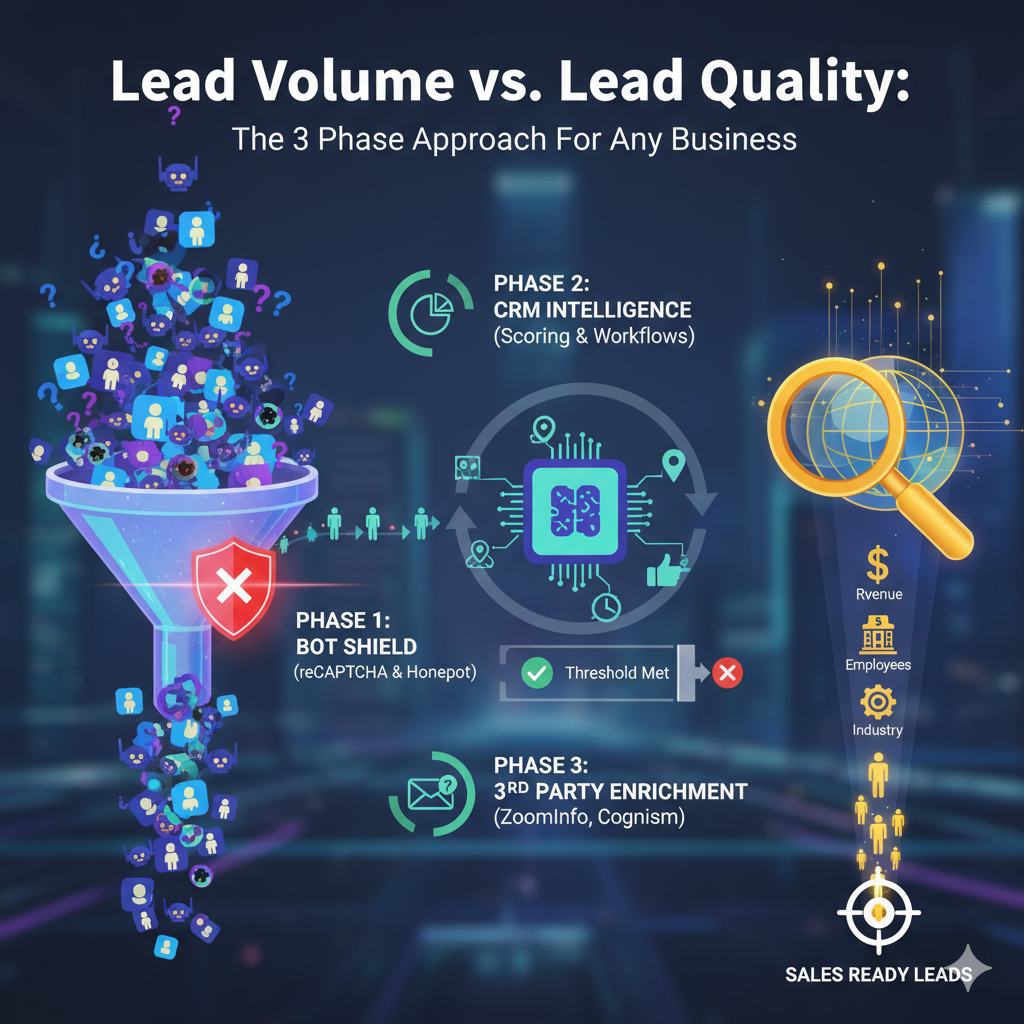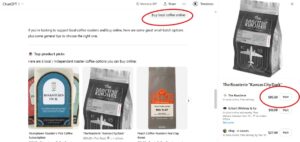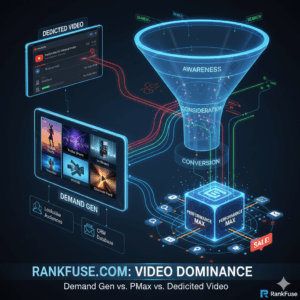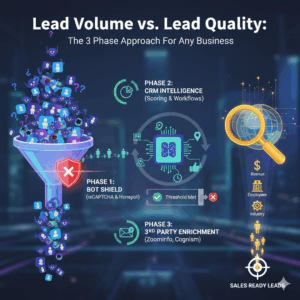In the world of sales and marketing, the debate is timeless: should you prioritize the sheer volume of leads or the quality of each individual prospect? The answer isn’t a simple “one or the other.” The most effective strategy evolves with your business, adapting to your team’s capacity and your growth trajectory.
Flooding your sales team with a torrent of unqualified contacts can lead to burnout and inefficiency. Conversely, being too restrictive can starve your pipeline and stall growth. The key is to find the right balance for your current situation. Here’s a practical, three-phase approach to help any business master the lead volume vs. quality equation.
Phase 1: Build the Foundation and Fill the Funnel
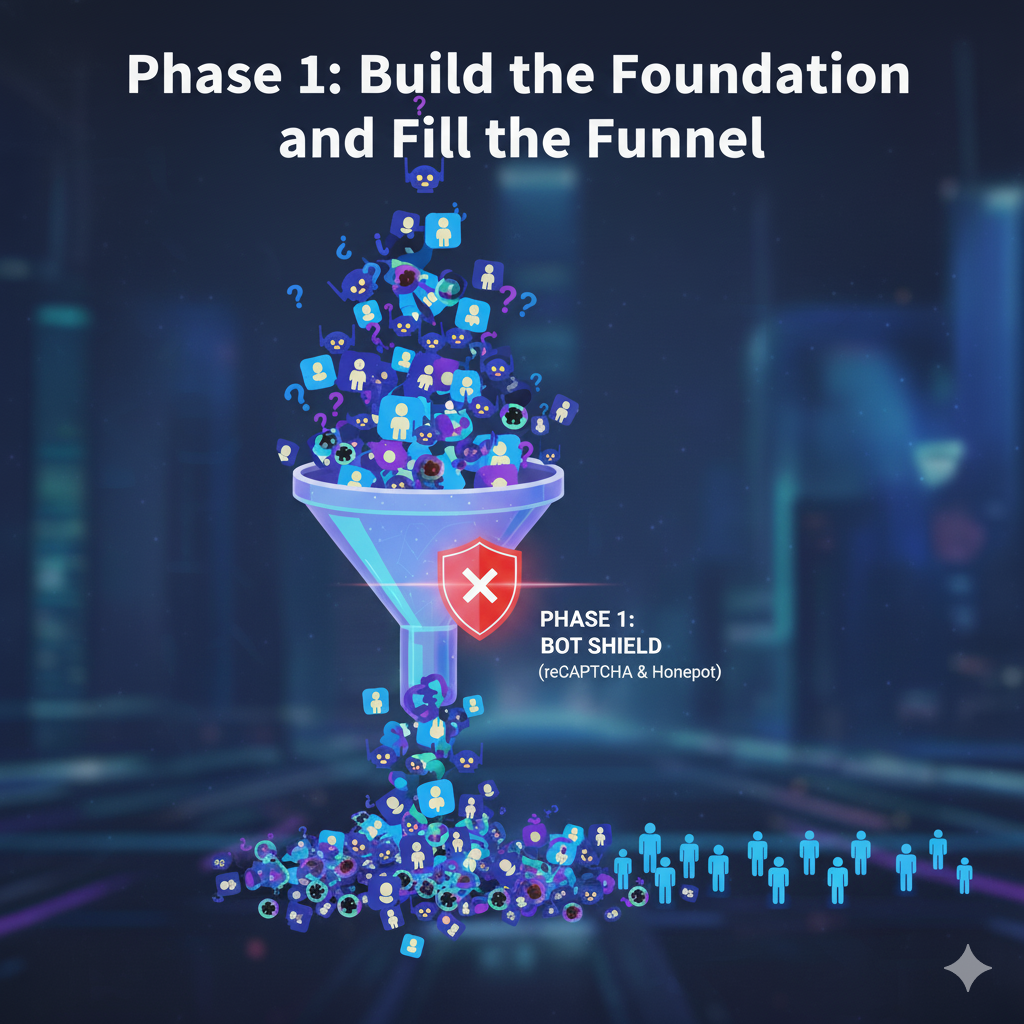
Before you can even think about human quality, you have to ensure your leads are coming from actual humans. The first priority is to ensure the quality of incoming leads by filtering out automated “bot” submissions. This can be achieved by implementing tools like reCAPTCHA and honeypot technology, which act as a barrier against spam. The internet is crawling with bots designed to spam forms, skewing your data and wasting your time. Your first line of defense is technical.
Always use reCAPTCHA and honeypot technology to keep the bots out. A honeypot is a hidden field in your form that is invisible to human users but visible to bots. If that field is filled out, the submission is automatically flagged as spam. This simple, foundational step cleans up your lead funnel from the very beginning.
Once you have measures in place to ensure you’re dealing with genuine human interest, the primary objective is to generate a high volume of leads to keep your sales team actively engaged. It’s important not to overcomplicate the lead qualification process at this stage. Instead, empower your sales team to sift through the leads and distinguish the promising opportunities from the less qualified ones.
The main goal here is to build momentum and gather valuable data on which lead generation strategies are most effective. Simply put, quality only matters after you have established enough volume.
As this phase progresses, you’ll likely begin to question the optimal number of form fields to use and what information is essential to collect upfront versus what can be gathered later by your sales team. This questioning is a natural progression and a sign that you are ready to move to the next phase.
Phase 2: Introduce Automation to Enhance Quality
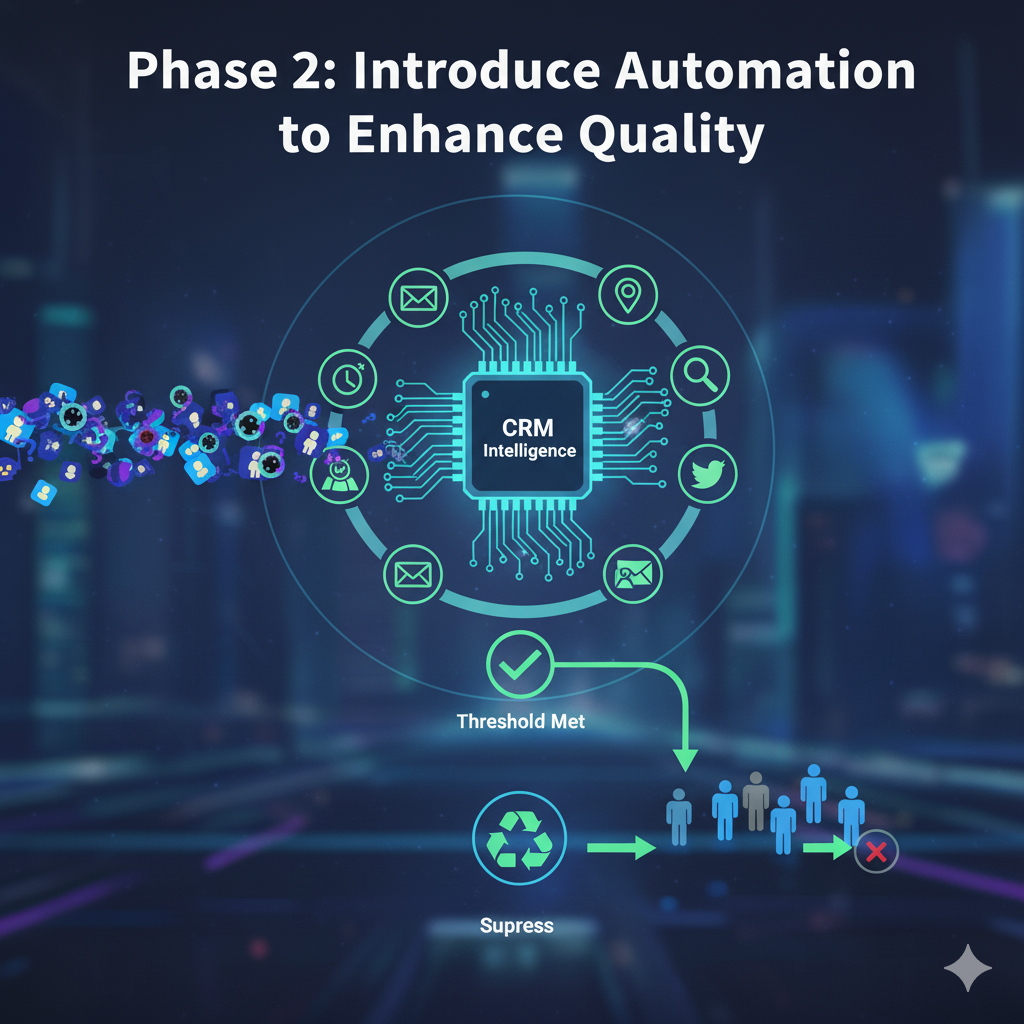
Your marketing efforts are a success! The lead volume is high, and your sales team is consistently busy. This is a great problem to have, but it’s also a turning point. Now, the risk isn’t a lack of leads, but a lack of quality. Your team’s valuable time is being spent on prospects who are a poor fit. It’s time to introduce a smarter filter.
If you’re getting plenty of leads to keep sales folks busy—but need to suppress the “bad ones”—then use a CRM to score and workflow leads based on behavior. This is where you leverage marketing automation to do the initial sorting.
For example, if you are a B2B company, you might not like seeing submissions with “@gmail.com” email addresses. Instead of deleting them, you can create a workflow that auto-sends them a follow-up email. This tests their interest; if they engage further, they might be a valuable prospect from a startup or a consultant. If they used a business email, however, you can pass them straight to sales.
You should also implement lead scoring based on digital body language. Assign points for actions and attributes like:
Pages Visited: Did they view your pricing or case study pages?
Geolocation: Are they in a target market?
Time on Site: How long did they spend engaging with your content?
Why did they engage?: Did they come from a specific campaign or interact with your brand for a reason?
Traffic Sources: Did they come from a high-intent organic search or a broad display ad?
- Screen Size: Are the scrolling on their phone, or are they researching from their laptop?
Once a lead passes the minimum score threshold you’ve set, only then should they be passed to sales. This ensures your team spends their time on prospects who have shown genuine interest and fit your ideal customer profile.
Phase 3: Layer on Advanced Intelligence for Unmatched Precision

You’ve eliminated bots and are using your CRM to score and filter leads. Your process is strong, but you’re still fighting quality issues and you don’t want to expand the sales team to work unqualified leads. Perhaps your current sales team is wasting time with companies that are too small, in the wrong industry, or simply don’t have the budget. To reach the pinnacle of lead qualification, you need to add external intelligence.
If you’re still fighting for quality, the final layer you can apply is 3rd party technology. Integrating your CRM with a data enrichment provider is the gold standard for major brands that require more comprehensive, accurate, and in-depth data at scale. These platforms take a single data point, like an email address, and instantly append a wealth of information to the contact record.
ZoomInfo is a major player in this space and works seamlessly with CRMs like HubSpot, Salesforce, and Zoho. It can provide crucial data points like company revenue, employee count, industry codes, and even the technologies a company uses. This allows you to automatically qualify or disqualify leads based on firmographic data that a prospect would never fill out in a form. For businesses operating internationally, Cognism is a popular choice, especially in the EU, due to its strong focus on GDPR compliance.
This final phase ensures that when a lead hits your sales team’s desk, it’s not just a contact—it’s a rich, detailed profile of a well-qualified opportunity, ready for a highly relevant conversation.
Ultimately, the debate between lead volume and lead quality is not about choosing one over the other, but about finding the right balance for your business. By following a phased approach, you can effectively scale your lead generation efforts. Start by building a solid foundation and filling your funnel, then introduce automation to enhance lead quality, and finally, layer on advanced intelligence for unmatched precision. This strategic progression allows you to move from a broad, volume-based strategy to a highly targeted, quality-driven approach, ensuring your sales team is always equipped with the best possible opportunities.

